Great Lakes Shipwreck Museum
(Whitefish Point)
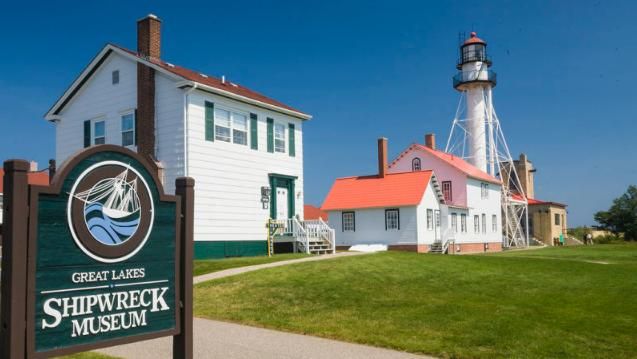
The Great Lakes Shipwreck Museum, located at Whitefish Point in Michigan's Upper Peninsula, serves as a poignant tribute to the maritime history of the Great Lakes and the countless sailors who braved its perilous waters. Nestled on the southeastern shore of Lake Superior, the museum is a significant destination for maritime enthusiasts, offering an in-depth look at the many shipwrecks that have occurred in this region, famously known as the "Graveyard of the Great Lakes."
Through its thoughtfully curated exhibits and artifacts, the museum brings to life the stories of sailors, their vessels, and the dangers they faced. Visitors are transported into the past, exploring the historical significance of Whitefish Point and the challenges posed by the unpredictable waters of Lake Superior. From the tragic sinking of the Edmund Fitzgerald to lesser-known wrecks, the museum fosters a deeper appreciation for the bravery and resilience of those who sailed these treacherous waters. The surrounding landscape, which includes the iconic Whitefish Point Light Station, further enhances the immersive experience, making the museum a must-visit for anyone interested in maritime history and the legacy of the Great Lakes.
Historical Significance:
The Shipwreck Coast:
Whitefish Point, located on the southeastern shore of Lake Superior, has long been recognized as one of the most treacherous areas for navigation in the Great Lakes, earning it the ominous nickname “Graveyard of the Great Lakes.” The stretch of water near Whitefish Point, known as the Shipwreck Coast, has been the site of countless shipwrecks, caused by a combination of unpredictable weather, dense fog, and the high volume of maritime traffic. The violent storms that often sweep across Lake Superior, particularly in late autumn, have claimed numerous vessels and the lives of their crews. Navigating these dangerous waters, sailors faced intense challenges, from sudden changes in weather to treacherous currents. The convergence of shipping routes added to the peril, leading to collisions and disasters.
The Great Lakes Shipwreck Museum preserves the maritime history of this region, telling the stories of the shipwrecks and the sailors who braved the unforgiving waters. Through its exhibits, the museum honors their courage and offers visitors a deep understanding of the difficulties that sailors encountered while navigating this notorious stretch of Lake Superior.
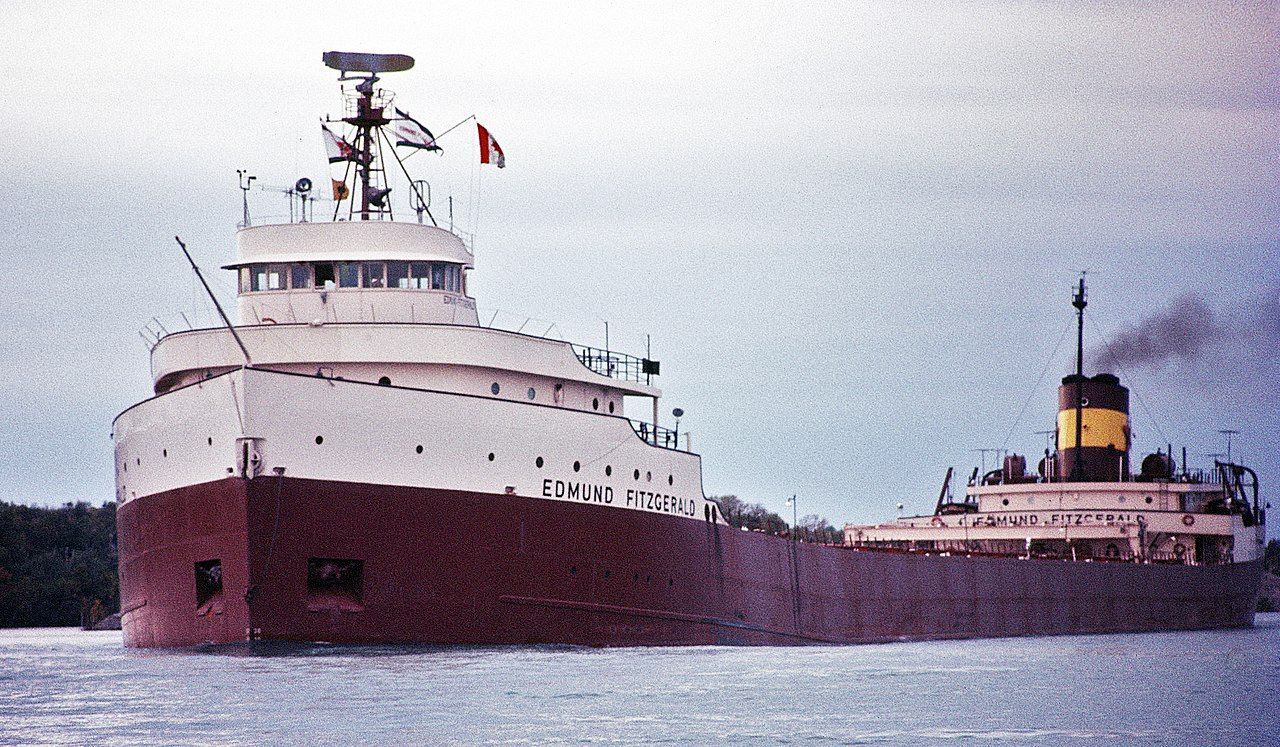
Edmund Fitzgerald Tragedy:
One of the most tragic and well-known shipwrecks near Whitefish Point is the sinking of the SS Edmund Fitzgerald on November 10, 1975. This massive freighter, measuring over 700 feet in length, sank during a severe storm, taking all 29 crew members with her. The museum dedicates a significant portion of its space to the Edmund Fitzgerald, displaying artifacts recovered from the wreck and offering a detailed account of the circumstances leading up to its demise.
The sinking of the Edmund Fitzgerald remains a haunting reminder of the dangers of the Great Lakes and is immortalized in the famous ballad by Gordon Lightfoot. Visitors to the museum can view the ship’s bell, a powerful symbol of the lives lost that night, and reflect on the tragedy’s impact on maritime safety and history.
Museum Exhibits::
The Shipwreck Museum:
At the heart of the Great Lakes Shipwreck Museum is its main building, a captivating space that houses a rich array of exhibits and artifacts detailing the maritime history of the region. Upon entering, visitors are greeted by knowledgeable staff, whose passion for maritime heritage shines through as they share in-depth insights into the displays. The museum is more than just a collection of artifacts; it serves as a living testament to the stories of the men and women who sailed these waters, as well as the many who met tragic ends in the treacherous "Graveyard of the Great Lakes." Through the exhibits, visitors are taken on an immersive journey into the perils, triumphs, and daily lives of those who navigated the Great Lakes.
Shipwreck Artifacts:
One of the most compelling features of the museum is its extensive collection of artifacts recovered from shipwrecks scattered across the depths of Lake Superior and the surrounding Great Lakes. Each artifact serves as a tangible link to the past, telling stories of both ordinary and extraordinary moments in maritime history. From personal belongings like worn leather shoes and sailors' pocket watches to navigational instruments like compasses and charts, these pieces are meticulously preserved and displayed, offering visitors a glimpse into the lives of those who once depended on these items for survival. The dedication of the museum to preserving these artifacts highlights its commitment to honoring both the lives lost at sea and the rich maritime legacy of the Great Lakes.
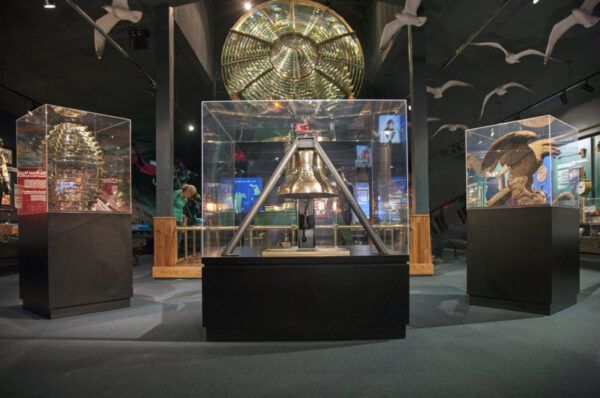
Edmund Fitzgerald Gallery:
A poignant highlight of the museum is its dedicated gallery to the SS Edmund Fitzgerald, perhaps the most infamous shipwreck in Great Lakes history. Visitors are drawn to this section to explore the tragic events of November 10, 1975, when the massive freighter sank during a storm on Lake Superior, taking the lives of all 29 crew members. The gallery features items recovered from the wreckage, including the ship’s bell, and provides detailed accounts of the ship's final hours. Through displays and artifacts, visitors gain a deeper understanding of the devastating impact this disaster had on maritime safety regulations and the wider shipping industry. The gallery stands as a solemn memorial to the crew, reminding visitors of the dangers of maritime navigation.
Lightkeeper’s Quarters:
Adjacent to the main museum building, the restored 1861 Lightkeepers' Quarters offers a window into the daily lives of the men and families who maintained the Whitefish Point Light Station. This historic structure is carefully preserved and furnished with period-appropriate items, allowing visitors to step back in time and experience the unique isolation of lighthouse life. The exhibits within these quarters showcase the hardships lighthouse keepers faced in keeping the light burning through harsh winters, dense fog, and fierce storms, while also maintaining communication with passing ships. It provides a powerful reflection on the essential role these individuals played in ensuring the safety of maritime vessels in the treacherous waters off Whitefish Point.
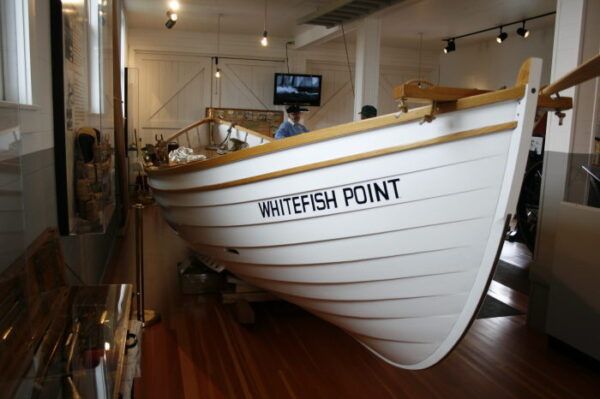
Whitefish Point Light Station:
Guided Tours:
The Whitefish Point Light Station, which has been operational since 1849, is one of the most significant components of the Great Lakes Shipwreck Museum complex. Visitors can participate in guided tours that offer a unique opportunity to explore this historic lighthouse and climb to the top for breathtaking, panoramic views of Lake Superior. From this vantage point, guests can appreciate the vastness and beauty of the lake, while also gaining insight into the treacherous conditions that sailors faced while navigating its waters. These tours also provide in-depth information on the crucial role lighthouse keepers played in ensuring that vessels were safely guided through the often turbulent and fog-shrouded waters of the Great Lakes. The lighthouse stands as a beacon of hope and safety, symbolizing the resilience of the maritime community in the face of immense challenges.
Fresnel Lens:
One of the most fascinating features of the Whitefish Point Light Station is its original third-order Fresnel lens, an impressive feat of 19th-century optical engineering. This meticulously crafted lens, composed of prisms and glass, significantly amplified the light produced by the lighthouse, allowing it to be seen from greater distances and providing critical guidance to ships traveling the treacherous waters. The preservation of this historic lens not only enhances the authenticity of the Whitefish Point Light Station but also serves as a tangible reminder of the technological advancements that shaped maritime navigation in the past.
Shipwreck Memorial:
Located near the lighthouse, the Shipwreck Memorial is a poignant tribute to the thousands of sailors who lost their lives in the perilous waters around Whitefish Point. The memorial features the names of countless mariners and the vessels they sailed, etched into the stone. It serves as a solemn reminder of the human cost of maritime exploration and the dangers that those navigating the Great Lakes faced. Visitors are invited to reflect on the bravery and resilience of those who perished in the unforgiving waters, and the enduring legacy of the maritime industry in the region.
Research and Education:
Library and Archives:
The Great Lakes Shipwreck Museum's commitment to advancing research and education is prominently reflected in its Richard and Linda Grossman Research Center. This center is a treasure trove for historians, researchers, and maritime enthusiasts alike, offering an extensive collection of maritime literature, historical documents, photographs, and other archival materials. These resources provide valuable insights into the maritime history of the Great Lakes, covering everything from shipbuilding techniques to detailed records of shipwrecks and the lives of sailors who braved these waters. The collection serves as an invaluable resource for those looking to deepen their understanding of the Great Lakes' rich maritime heritage.
In addition to serving individual researchers, the Research Center plays a vital role in supporting the museum’s broader educational mission. Scholars, students, and history enthusiasts can explore this collection to uncover stories of shipwrecks, maritime culture, and the region’s economic and historical development. The center also assists in curating new exhibits and content for the museum, ensuring that the knowledge it holds is continually shared with the public.
Educational Programs:
The Great Lakes Shipwreck Museum’s educational programs extend far beyond its walls, reaching students and schools across the region. The museum actively engages with educational institutions through hands-on learning experiences designed to make maritime history come alive. Students can explore topics such as navigation, underwater archaeology, and the cultural and economic importance of the Great Lakes. These programs are tailored to different age groups and academic levels, ensuring that the material is both accessible and engaging for young learners.
Outreach initiatives further enhance the museum’s impact, connecting maritime history with future generations. Virtual programs, workshops, and field trips allow schools to participate even if they can’t physically visit the museum. Through these efforts, the museum fosters a lifelong appreciation for maritime history, ensuring that the legacy of the Great Lakes continues to inspire curiosity and learning.
Preservation Efforts:
Underwater Archaeology:
The Great Lakes Shipwreck Museum plays a critical role in the ongoing study and preservation of shipwrecks that rest beneath the surface of Lake Superior and the other Great Lakes. Working alongside underwater archaeologists and preservationists, the museum is deeply involved in the exploration and documentation of these submerged historical sites. The cold, freshwater environment of Lake Superior has been particularly beneficial in preserving the remains of many ships, slowing the deterioration process and allowing for a more detailed study of maritime history. This natural preservation has resulted in a unique underwater archive, offering valuable insights into the construction, operation, and fates of vessels that once sailed the Great Lakes.
Ongoing archaeological efforts focus on meticulously documenting and interpreting these underwater time capsules. Divers and researchers use advanced technologies such as sonar imaging and underwater robotics to explore the wrecks in detail without disturbing their final resting places. These efforts not only help preserve the physical remnants of the ships but also contribute to a broader understanding of the cultural and historical significance of Great Lakes shipping. The museum works to share these discoveries with the public, turning these underwater secrets into educational opportunities for visitors.
Conservation of Artifacts:
Preserving the artifacts housed within the museum is a delicate and precise process that requires specialized conservation techniques. Items recovered from shipwrecks—such as navigational instruments, personal belongings, and pieces of the ships themselves—are meticulously cared for to ensure they remain intact for future generations to study and appreciate. The conservation team employs state-of-the-art methods to stabilize fragile artifacts, often working for months or even years on a single piece to prevent further degradation.
The museum’s dedication to artifact preservation reflects a deep commitment to maintaining the integrity of its collection. By preserving these historical objects, the museum ensures that the stories they represent remain alive, connecting visitors to the past and honoring the legacy of the sailors and ships that navigated the Great Lakes.
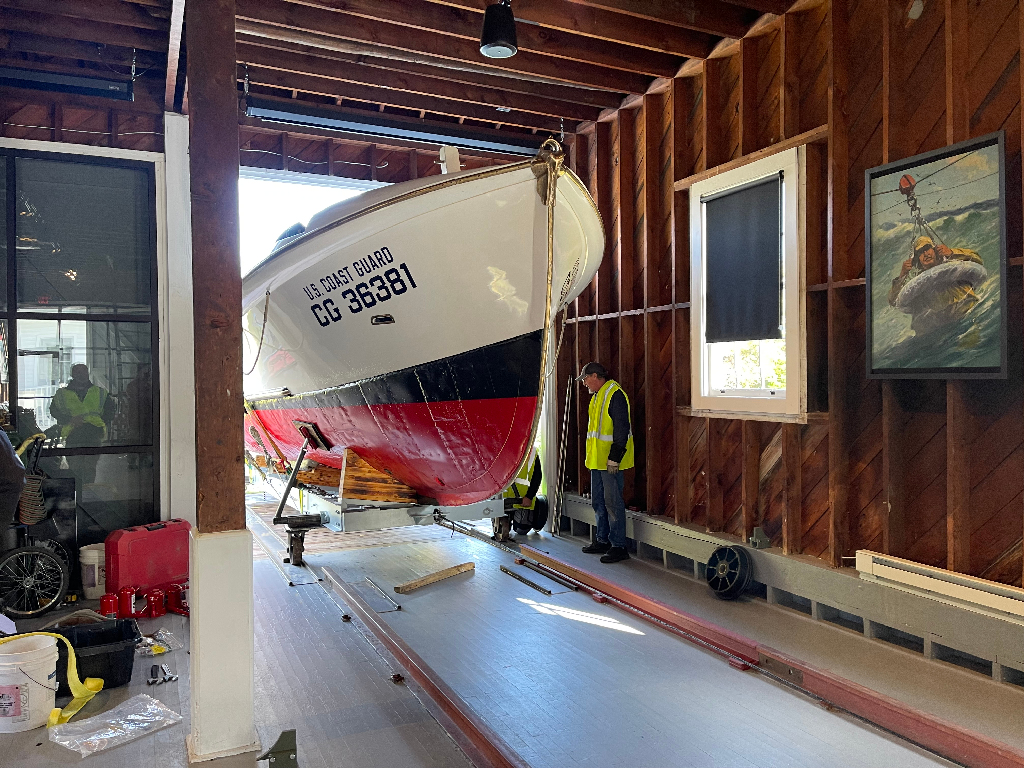
Visitor Experience:
Accessibility and Amenities:
The Great Lakes Shipwreck Museum is committed to providing a welcoming, engaging, and accessible experience for all visitors. The museum has worked diligently to ensure that its exhibits and grounds are designed with accessibility in mind, allowing individuals of all abilities to comfortably explore its offerings. Wide, paved pathways make navigating the outdoor exhibits and the lighthouse area easier, while ramps and accessible entry points allow everyone to enjoy the interior spaces. Inside, the exhibits are thoughtfully organized to provide adequate space for visitors with mobility devices, ensuring a seamless experience for all.
For those who may require additional assistance or accommodations, the museum’s friendly and knowledgeable staff are always ready to help. They can offer insights and guidance to make the visit more enjoyable, ensuring that no one misses out on the museum's rich storytelling.
After touring the exhibits, visitors can stop by the museum's gift shop, which offers a variety of maritime-themed merchandise. From books and apparel to decorative items and souvenirs, the shop provides the perfect way for guests to take home a piece of their experience. The proceeds from gift shop purchases directly support the museum’s preservation and educational efforts, allowing visitors to contribute to the museum's ongoing mission of honoring maritime history and preserving its legacy for future generations.
Events and Special Programs:
Throughout the year, the museum hosts a variety of events and special programs that further enrich the visitor experience. These themed exhibits, lectures, and demonstrations offer a deeper dive into maritime history and often align with important anniversaries and commemorations. Events like the anniversary of the sinking of the Edmund Fitzgerald, National Lighthouse Day, and other maritime heritage celebrations provide visitors with unique opportunities to connect with the stories of the Great Lakes. These events help bring history to life and encourage ongoing engagement with the museum's important work.